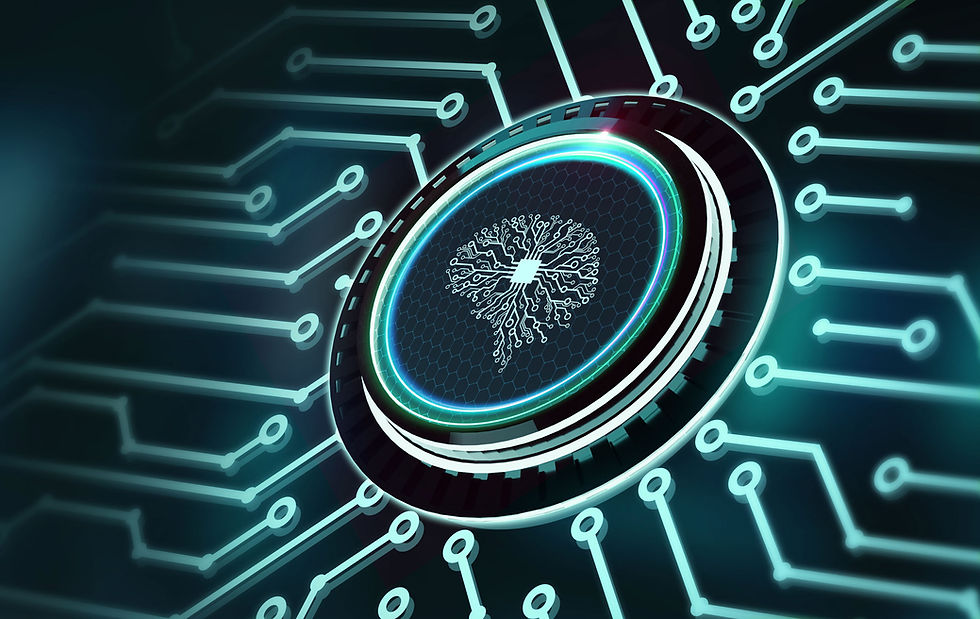TTFields Therapy: A New Treatment for Glioblastoma
- Ashby Glover
- Jun 12, 2024
- 3 min read

Glioblastoma multiforme (GBM), the most common form of malignant brain tumor, is an aggressive and deadly cancer. With an average survival time of only 12 to 18 months, only 25% of people will live more than a year after their diagnosis.1 Over the past four decades, there has been little improvement in survival rates.2 In adults, GBM usually occurs in the cerebral hemispheres in the frontal and temporal lobes, and causes devastating damage to the brain. It inherently resists conventional cancer therapies, and the brain itself has a limited ability to repair itself. GBM often causes fluid build-ups around the tumor and issues with the normal drainage of cerebrospinal fluid.3 As an incredibly deadly and difficult-to-treat cancer, there is a need for creative and innovative research into potential treatments for GBM. One such new treatment is Tumor-Treating Fields (TTFields) or tumor electric field therapy.
TTFields therapy is a non-invasive anti-cancer physiotherapy that delivers alternating electric fields, producing various effects at different intensities. These fields are delivered directly through the scalp using adhesive patches in a skull-cap-like arrangement.4 Low-frequency fields have been shown to inhibit cancer cell growth by interfering with mitosis, and other biological processes such as DNA repair, tumor cell migration, and immunological responses which can all be influenced by TTFields.5 Currently, there are TTField devices already available for use by the public to treat GBM. These devices apply fields at a frequency which specifically targets the cell division process of rapidly dividing cells such as glioblastoma. Because “normal adult brain cells divide slowly, if at all,” they are thought to not be affected by TTFields.6
The efficacy of TTFields for treating GBM has been tested in vitro (in an artificial environment) and in vivo (in living organisms). One study found that in vitro, TTFields were “robustly effective in suppressing cell proliferation” of glioblastoma cell cultures.7 The effects were dependent on the frequency, strength, and duration of the field. In vivo, tumor-bearing rats were shown to have significantly reduced tumor volume and a prolonged survival time.8 One important effect of TTFields is likely its ability to reduce cancer cell migration and invasion, which restrains the usual aggressive and invasive nature of GBM.9
Usually used alongside chemotherapy, TTFields may help people live longer than with chemo alone. Findings indicate that TTFields have “the potential to increase intracellular/intratumoral concentrations of chemotherapy,” increasing the efficacy of the treatment.10 For those whose GBM has come back after initial treatment, it can be used instead of chemo as a way to reduce side effects.11 The patches that line the head can even be made portable. The array can be attached by wires to a battery-powered device that can be carried in a backpack, allowing people to take their treatment on the move.12 The main side effect of TTFields is irritation on the scalp from the array itself, since studies have shown treatment to be most effective when the array is worn for 18 or more hours per day.13
For an aggressive and difficult-to-treat cancer such as glioblastoma, a new technology such as TTFields is an inspiring feat of research and innovation. The full potential of TTFields has yet to be explored. For cancers such as GBM which have long eluded traditional treatments, there is a great need for creative and thoughtful research for new methods and mechanisms to treat them. While for now, it remains a supplementary treatment alongside chemotherapy, TTFields have demonstrated a new angle from which to pursue research into cancer treatment.
Thank you for reading,
Ashby Glover
References
1."Glioblastoma prognosis." The Brain Tumour Charity. https://www.thebraintumourcharity.org/brain-tumour-diagnosis-treatment/types-of-brain-tumour-adult/glioblastoma/glioblastoma-prognosis/
2. Ola Rominiyi, Aurelie Vanderlinden, Susan Jane Clenton, Caroline Bridgewater, Yahia Al-Tamimi, and Spencer James Collis. "Tumor treating fields therapy for glioblastoma: current advances and future directions." British Journal of Cancer 124 (2021): 697-709. https://doi.org/10.1038/s41416-020-01136-5
3. Jigisha P. Thakkar, Pier Paolo Peruzzi, and Vikram C. Prabhu. "Glioblastoma Multiforme." American Association of Neurological Surgeons. https://www.aans.org/Patients/Neurosurgical-Conditions-and-Treatments/Glioblastoma-Multiforme
4. "Tumor Treating Fields (TTF) or Optune® for brain tumours." The Brain Tumour Charity. https://www.thebraintumourcharity.org/brain-tumour-diagnosis-treatment/treating-brain-tumours/emerging-treatments/ttf-tumour-treating-fields/
5. Rominiyi, "Tumor treating fields therapy."
6. "Tumor Treating Fields (TTF) or Optune®."
7. Hao Wu, Lin Yang, Hanjie Liu, Dan Zhou, Dikang Chen, Xiaoque Zheng, Hui Yang, Chong Li, Jiusheng Chang, Anhua Wu, et al. "Exploring the efficacy of tumor electric field therapy against glioblastoma: An in vivo and in vitro study." CNS Neuroscience & Therapeutics 27, no. 12 (December 2021): 1587-1604. https://doi.org/10.1111/cns.13750
8. Wu, "Exploring the efficacy."
9. Rominiyi, "Tumor treating fields therapy."
10. Rominiyi, "Tumor treating fields therapy."
11. "Tumor Treating Fields (TTF) Therapy for Adult Brain and Spinal Cord Tumors." American Cancer Society, 6 September 2023. https://www.cancer.org/cancer/types/brain-spinal-cord-tumors-adults/treating/alternating-electric-field-therapy.html
12. "Tumor Treating Fields (TTF) or Optune®."
13. Rominiyi, "Tumor treating fields therapy."



Comments